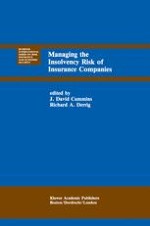Two different applications have been considered, automobile claims from Massachusetts and health expenses from the Netherlands. We have fit 11 different distributions to these data. The distributions are conveniently nested within a single four parameter distribution, the generalized beta of the second type. This relationship facilitates analysis and comparisons. In both cases the GB2 provided the best fit and the Burr 3 is the best three parameter model. In the case of automobile claims, the flexibility of the GB2 provides a statistically siE;nificant improvement in fit over all other models. In the case of Dutch health expenses the improvement of the GB2 relative to several alternatives was not statistically significant. * The author appreciates the research assistance of Mark Bean, Young Yong Kim and Steve White. The data used were provided by Richard Derrig of The Massachusetts Automobile Rating and Accident Prevention Bureau and by Bob Van der Laan and The Silver Cross Foundation for the medical insurance claim data. 2~ REFERENCES Arnold, B. C. 1983. Pareto Distributions. Bartonsville: International Cooperative Publishing House. Cummins, J. D. and L. R. Freifelder. 1978. A comparative analysis of alternative maximum probable yearly aggregate loss estimators. Journal of Risk and Insurance 45:27-52. *Cummins, J. D., G. Dionne, and L. Maistre. 1987. Application of the GB2 family of distributions in collective risk theory. University of Pennsylvania: Mimeographed manuscript. Hogg, R. V. and S. A. Klugman. 1983. On the estimation of long tailed skewed distributions with actuarial applications.
